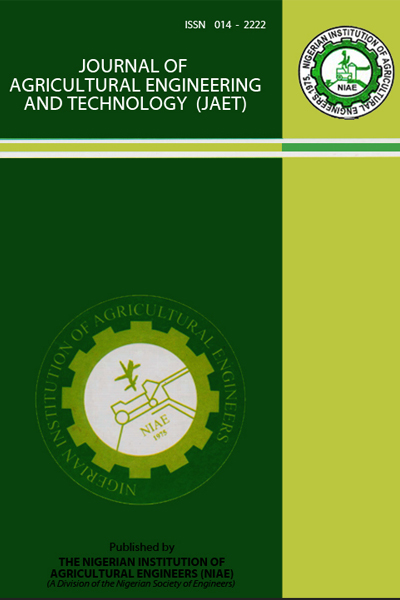MODELING RICE GRAIN CLEANING PROCESS IN A STATIONARY DESTONER
Keywords:
Mathematical Modeling, Destoning, Dimensional analysis, Efficiency, ValidationAbstract
The quality of local rice is a major concern for the future of the Nigerian rice sector. The major problem being the appearance and cleanliness of the rice delivered to the market. They are characterized by high percentage of impurities like husk and stones as well as under size/broken grains which reduces it economic value and makes it difficult to compete favourably with imported ones. Therefore, one of the important quality addition is reduction of contaminants especially stones to the barest minimum. In this research work, a mathematical model prediction equation for destoning of rice was developed based on the physical and aerodynamic properties of rice and machine characteristics. The dimensions and physical characteristics of three rice varieties; Kano, Zaria, and Mario were determined in the laboratory. Dimensional analysis using the Buckingham Pi (π) theorem was used to obtain a functional relationship between the cleaning efficiency and independent variables which include; feed rate, acceleration due to gravity, frequency of oscillation, speed of machine, terminal velocity, bulk density, true density and moisture content. The cleaning efficiency model was validated with data obtained from a developed rice destoning machine in the Department of Agricultural and Environmental Engineering, Modibbo Adama University of Technology Yola. The destoning efficiency showed a good agreement between the predicted and experimental data at 5% level of significance.


